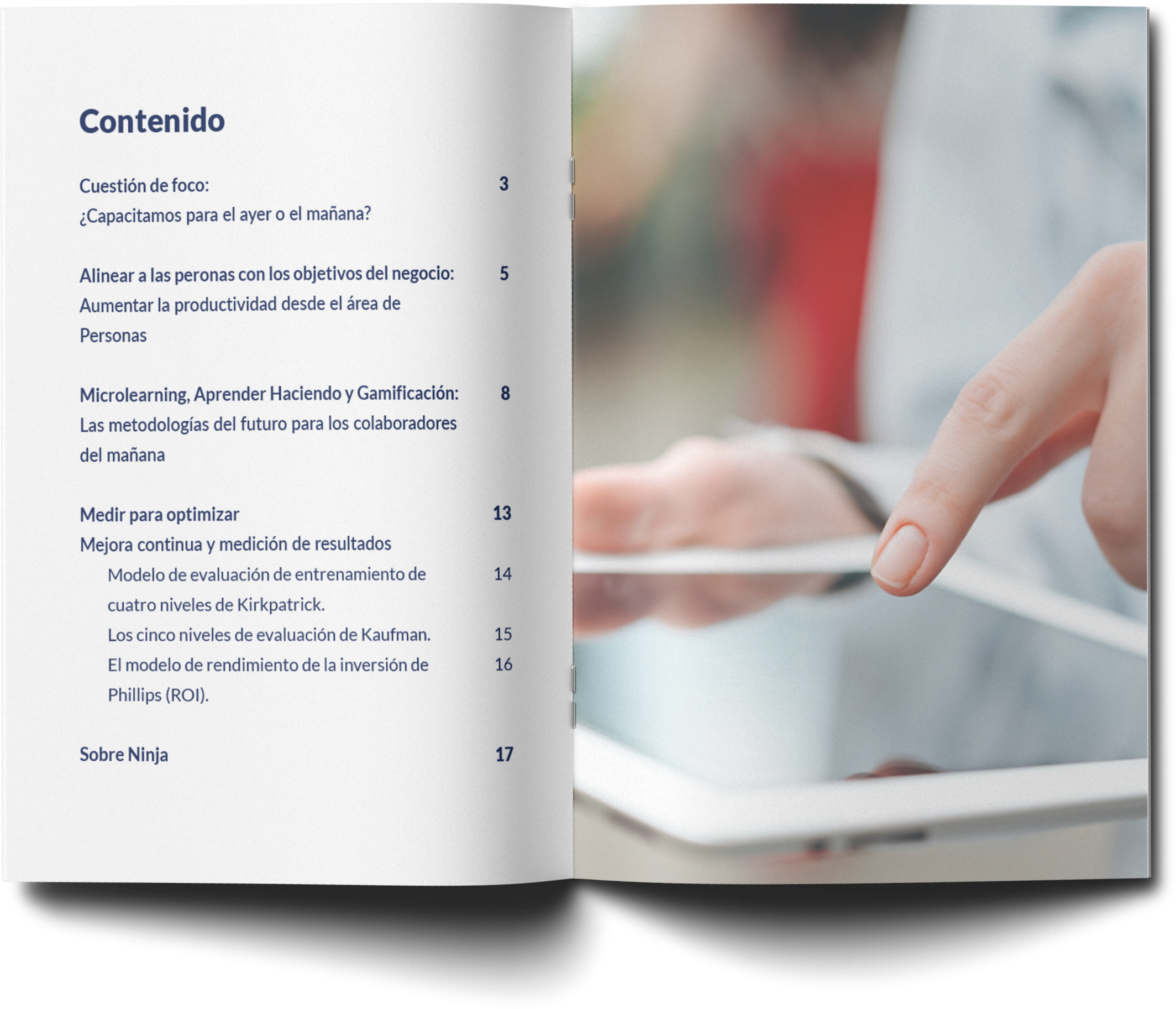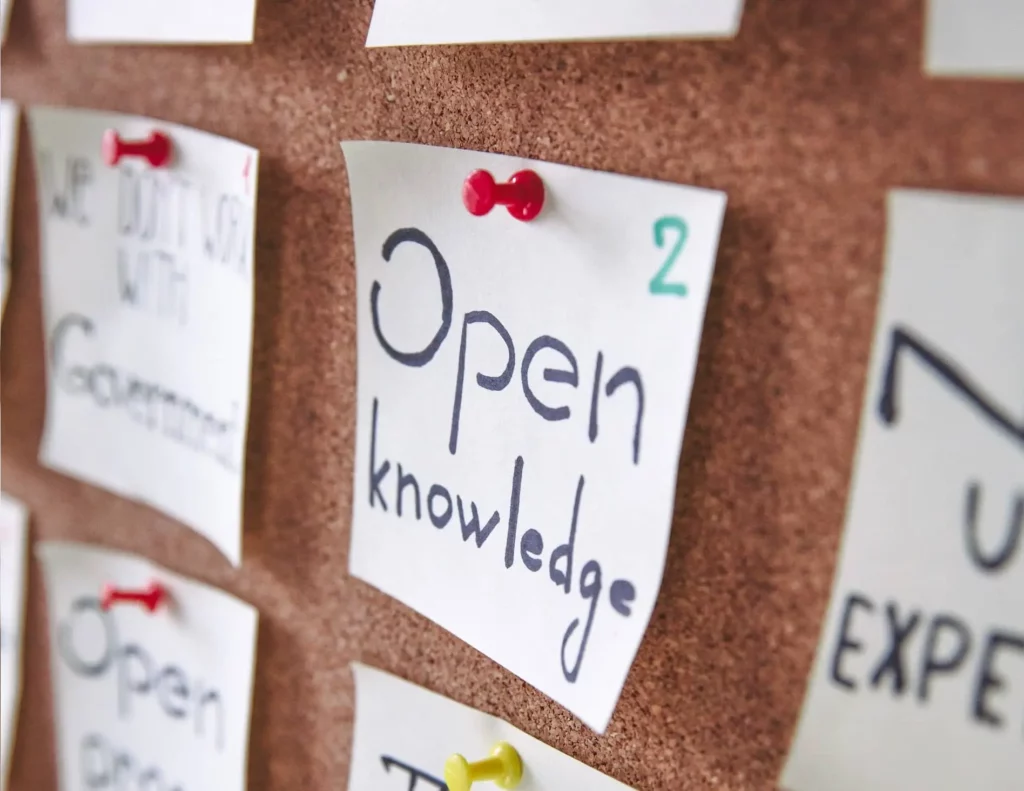[Guide] Detection of training needs 2023: Everything you need to know
Make a Capacitation needs' detection (DNC) is essential when you must perform a Training Plan. In today's volatile work environment, training is a critical mission for any company.
It is not only to improve the performance of a collaborator and that this leads to meeting the company's objectives. Corporate training too It must reduce the skills gap and empower workers to a new level.
Imagine: You decided to travel to the place you have always dreamed of. It is at a distance, perhaps, extraordinary. But you are passionate about the challenge. When you start planning you have a series of resources. It can be from a simple Google search, asking for references from someone you know, a video on YouTube, among others. Each of these actions They are inputs that will surely help you in your goal. to finalize your trip planning. But how to start?

Something similar is to perform a DNC. An analysis tool that, as they say from Mettl, allows you to visualize the purpose of do training realistically. “Ensuring that expectations, objectives and business impact are achievable.”
At Ninja Excel we want to support you in every step to complete a training. In the following blog, you will know how to carry out an effective Training Needs Detection.

What is a Training Needs Detection?: Definition and objectives
According to AIHR, a DNC is a tool to identify and analyze the gap between actual versus desired knowledge, skills, and abilities at work. Meanwhile, it is also defined by Mettl as “the structured process of understanding the training requirements of the organization and workers.”
Timely detection of training needs will help strengthen people's performance. This will make the organization more productive, since it will focus on “structuring plans and programs that allow the needs of the company to be met. […] In order to make them achieve their objectives, whether short, medium or long term.", they affirm from UAEH.
The need to do training in any company is summarized from the following equation, prepared by Michael L. Moore and Philip Dutton.
Training needs =
Standard or desired execution – Present or current execution
FOUNTAIN: DIPBOYE, RL; SMITH, CS AND HOWELL, WC (1994) UNDERSTANDING INDUSTRIAL AND ORGANIZATIONAL PSYCHOLOGY. AN INTEGRATED APPROACH
In sum, By preparing a DNC you will be able to:
- Prioritize resources and time.
- Make informed decisions.
- You will know if there are indeed gaps in competencies, knowledge and/or skills.
- Gather powerful information about your collaborators.
- Align the objectives of doing training with business objectives.
5 benefits of performing a DNC
Carrying out a DNC for your company or organization has a series of benefits that can be extended over time. We have collected the most concrete benefits so you can get the most out of this analysis tool. The information is from E-Learning Industry and Mettl.

1- You will identify if there are knowledge gaps before they become a problem
Detecting training needs will help you identify any existing knowledge gap in your workers. This is how you can adopt “a proactive approach” with some specific training.
2- It will help you plan for the rest of the year
Performing the DNC will help you prepare a much faster training plan. From the collection of background information, You will know what time of year to give the training.
3- Featured training that you may not have considered
By determining the best and most efficient skills to enhance, you will know the type of training to do.
4- Training will be focused on workers and/or areas that really require it
With this analysis tool, you will highlight the areas where your team really doesn't need more training at the moment.
It also benefits workers in their professional and career advancement. Likewise, it is a recommended practice to increase the retention rate in any organization.
5- Training will be aligned with the organizational context
By researching training needs in detail, you will be able to understand how to align objectives. In this way, you will be able to satisfy the exact needs of your collaborators and the company. Likewise, you will obtain a better return on investment (ROI).
'The great challenge of updating training plans'
How to identify that your company needs to do a DNC?
According to AIHR, there are four variables to know if it is necessary to initiate a DNC in your organization. This is summarized in:
- Identify the desired work situation. For example, having financial reports with graphs that help their understanding.
- Identify the current employment situation. For example, financial reports without detailed or interactive charts.
- Do a gap analysis. There it must be determined if it is caused by lack of knowledge, skills or abilities. In the particular case that we are presenting, knowledge in Microsoft Excel.
- And if this gap exists, then we must start our needs analysis!
Training may be necessary when there is a gap between desired performance and current performance, and the reason for that gap is the lack of skills or knowledge.
What are the 3 levels of analysis for detecting training needs?

To get the most benefit and specificity from your DNC, you can choose one of three approaches to discover if this skills gap exists. It is the so-called Three Level Analysis of McGhee and Thayer (1961). They present a model to consider the training needs of the company based on three levels of analysis: organizational level, operational level and individual analysis. Let's review!
Organizational
It is designed to address the problems and weaknesses of the organization as a whole. As well as to further improve the company's current competencies and strengths
Operational
The analysis at the operational level determines that it requires a particular area of the company to carry out an operation. Identifies the specific training needed to improve the skills of a team, department or business unit.
Individual
The analysis of training needs at the employee level identifies the difference between the actual and expected performance of a collaborator.
6 steps to carry out a Training Needs Detection
Below, we compile the following step by step so that you can prepare the best Training Needs Detection.
1- What do we want to achieve? Definition of objectives for the detection of training needs
Before formalizing a need to do a DNC, we must check the vision and objectives of the organization. It is essential to know the goal that the entity and its areas must achieve. Be recognized for having good labor practices? Increase commercial presence in another country? Acquisition of new supplies or machines for workers? To this Filip Moriau calls it a symptom of “organizational stress”, since it shows pain in the company.

Defining organizational objectives roots training in a broader context. In this way, Mettl invites you to think about relevant objectives of today and the future that will shape the training of tomorrow. “They will help understand the vision, mission and objectives of your organization.”
Training Objectives + Business Objectives = Goal achieved
From SHRM They emphasize that the organization must ask itself the following questions:
- Why is the organization conducting a training needs assessment?
- What is the end result that the worker, manager or area is trying to achieve?
- Will training contribute to this achievement?
2- Identify competencies that will help obtain that achievement
The next step is to define behaviors, knowledge, skills, and personal characteristics linked to business results to achieve objectives. This way we will know if it is necessary to detect training needs.
From AIHR, they propose the following to understand why this is the next step. For example, if the company is training new salespeople, they have detected that they must have a certain profile of characteristics. For example, for different types of behavior, the area has the following mapped:
| Behaviors | Description |
| Build relationships | Able to effectively build and maintain relationships with a wide range of potential clients. Stay in the Top of Mind from them. |
| Detect opportunities | Be able to effectively detect and evaluate opportunities when they arise. |
| Turn opportunity into a deal | How the person will be able to solve their problem through experience and close the deal. |
3- Obtain information to know existing competencies or skills
Having in mind what we want, we can direct our efforts towards knowing the current scenario. In this way we will direct the investigation to whether or not the desired behaviors are being met. In accordance with BLGroup, “the data collected must result in the linking of each competency with the desired business objective.”
According to E-Learning Industry To obtain information on the skills of collaborators, they can prepare:
- Specific questionnaires. Self-assessment questionnaires provide insight into the employee's skills. Of course, the questionnaire must be precise.
- Psychometric test: They evaluate the traits and characteristics of the worker's personality.
- Interviews: They give an account of how the worker is performing in relation to the KPIs and/or objectives set out above. Help them express their career goals and training requirements.
- Focus group interviews with managers or direct supervisors.
- Work metrics: Data collected from a Performance Review, for example, can help develop the DNC.
- Evaluation reports of courses already taken: Diagnostic tests from other courses, will also provide valuable information.
4-Skills gap: Identify what exists and what is missing
Once you have identified a series of competencies that can help achieve the company's objectives and those that you should train, the evaluation begins. That is, there are so many skills, competencies or skills that workers already have versus those that need to be incorporated.
From BLGroup, state that the organization can carry out a competency assessment. In this step, they suggest “having knowledgeable people, usually managers, rate the behaviors of target personnel.”
In this step, 360-degree feedback surveys are also used. These evaluations, “encompass the perception of a worker's performance by colleagues, subordinates, direct bosses and even clients.”
5- Define the proposed Training need
From AIHR They suggest applying the ADDIE model to synthesize. It is an acronym in English for Analyze, Design, Develop, Implement and Evaluate. A good training design involves going through the five stages. It is precisely this stage where, before choosing the program to apply, you must settle:
- Learning objectives and their alignment with the organization's objectives.
- The target audience.
- Recognize the results of behavior.
- Identify learning limitations.
6- Prioritize, analyze and apply the training program
At last! It's time to decide. With the information in hand, they can now choose the training to implement. You can decide who will be the training provider. Budgets must also be determined. Finally, you must decide whether you will work with internal or external trainers.
